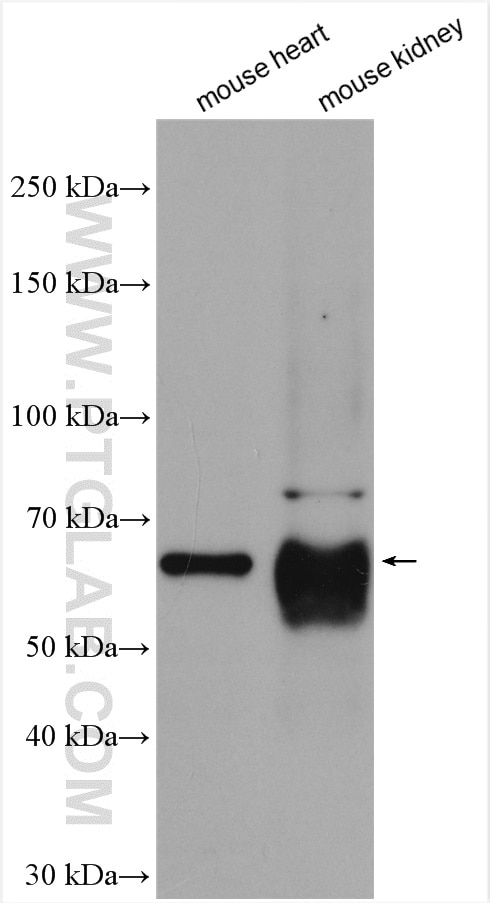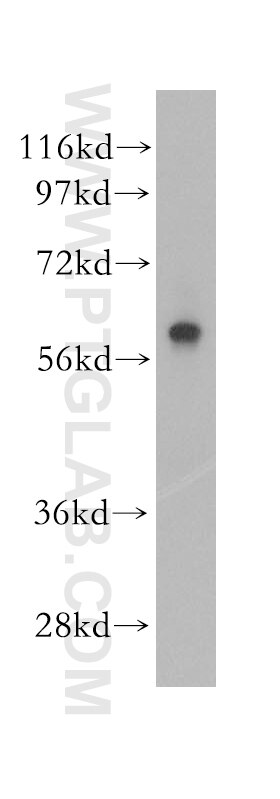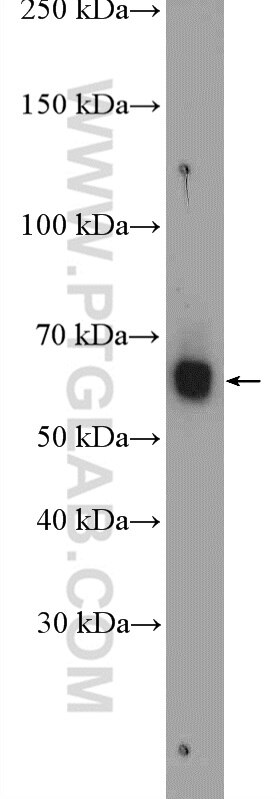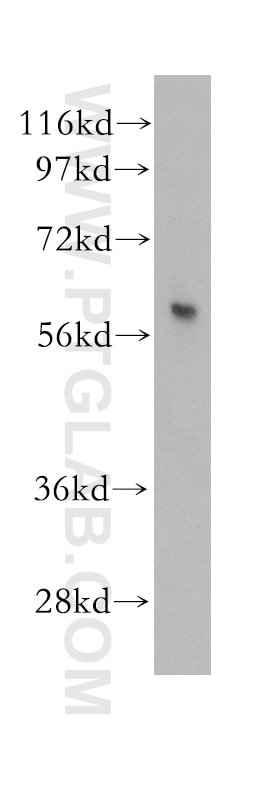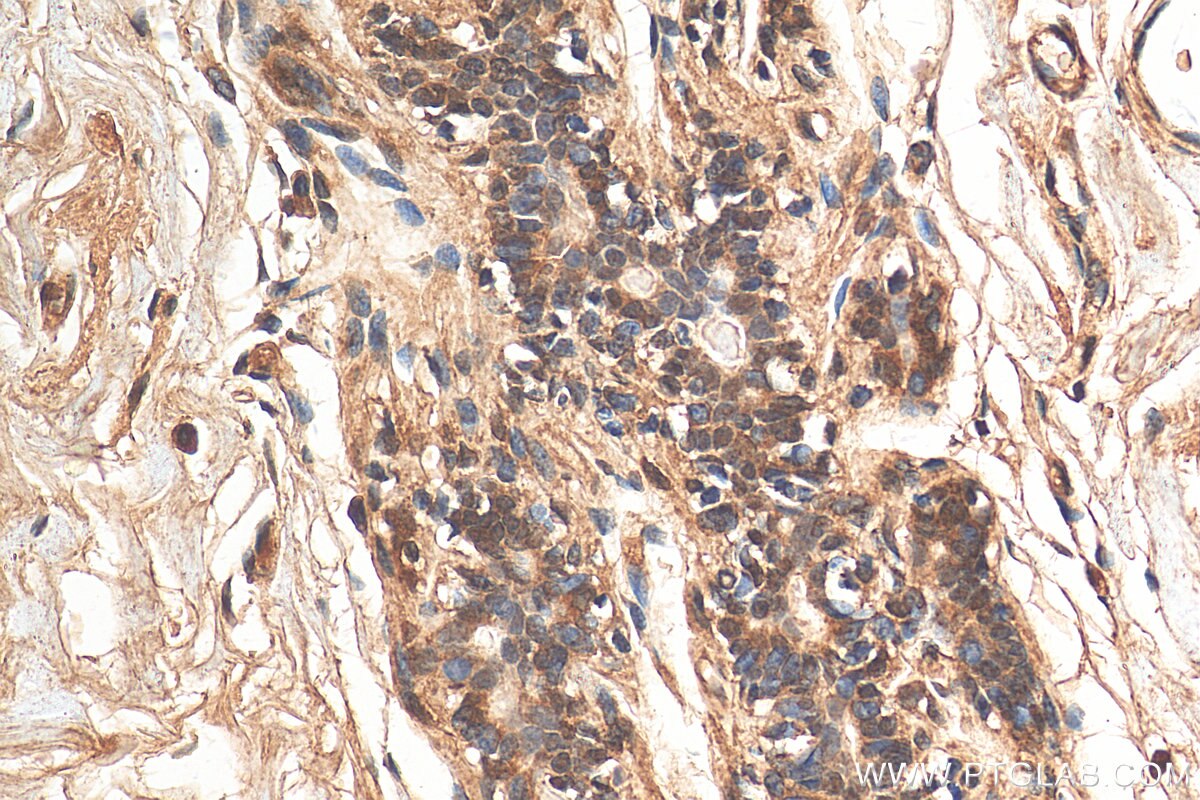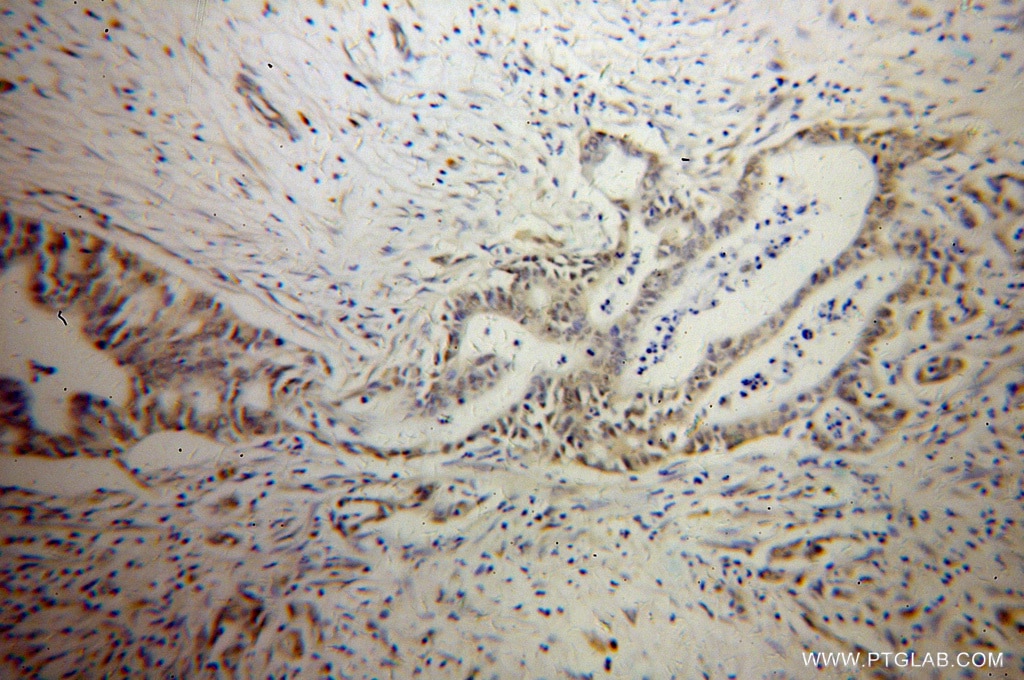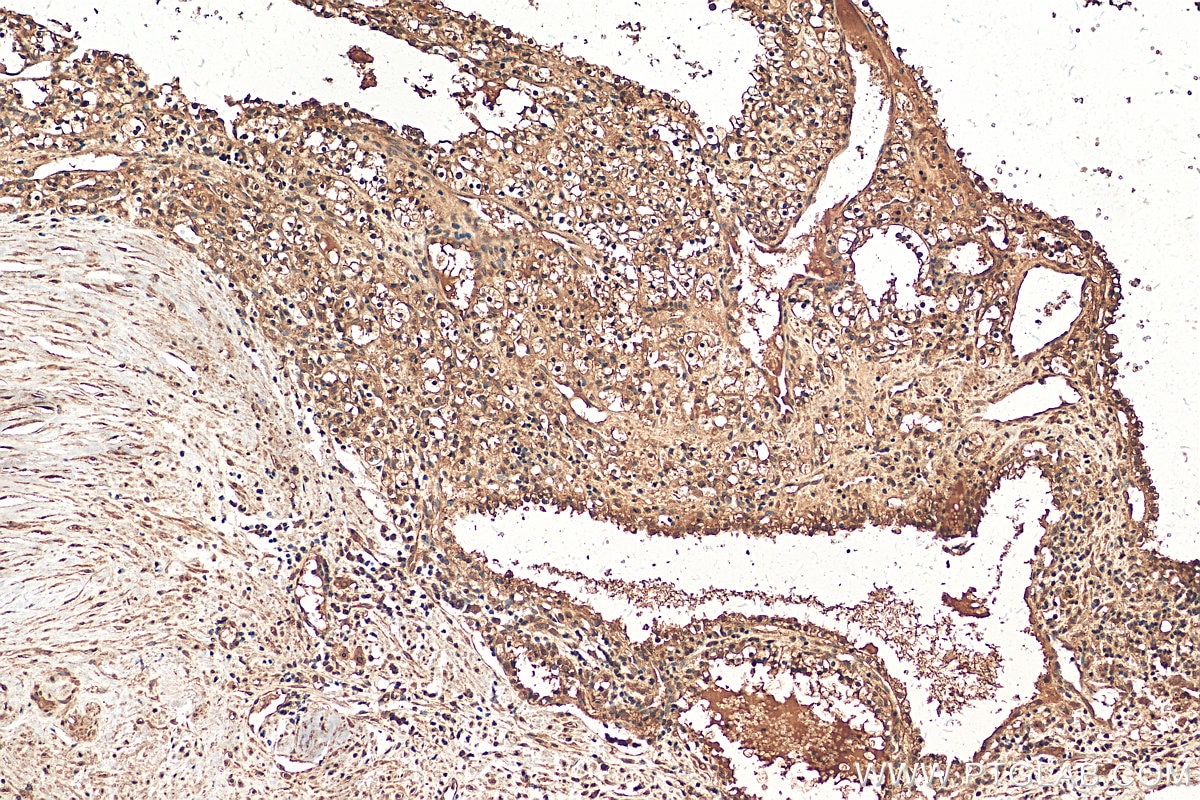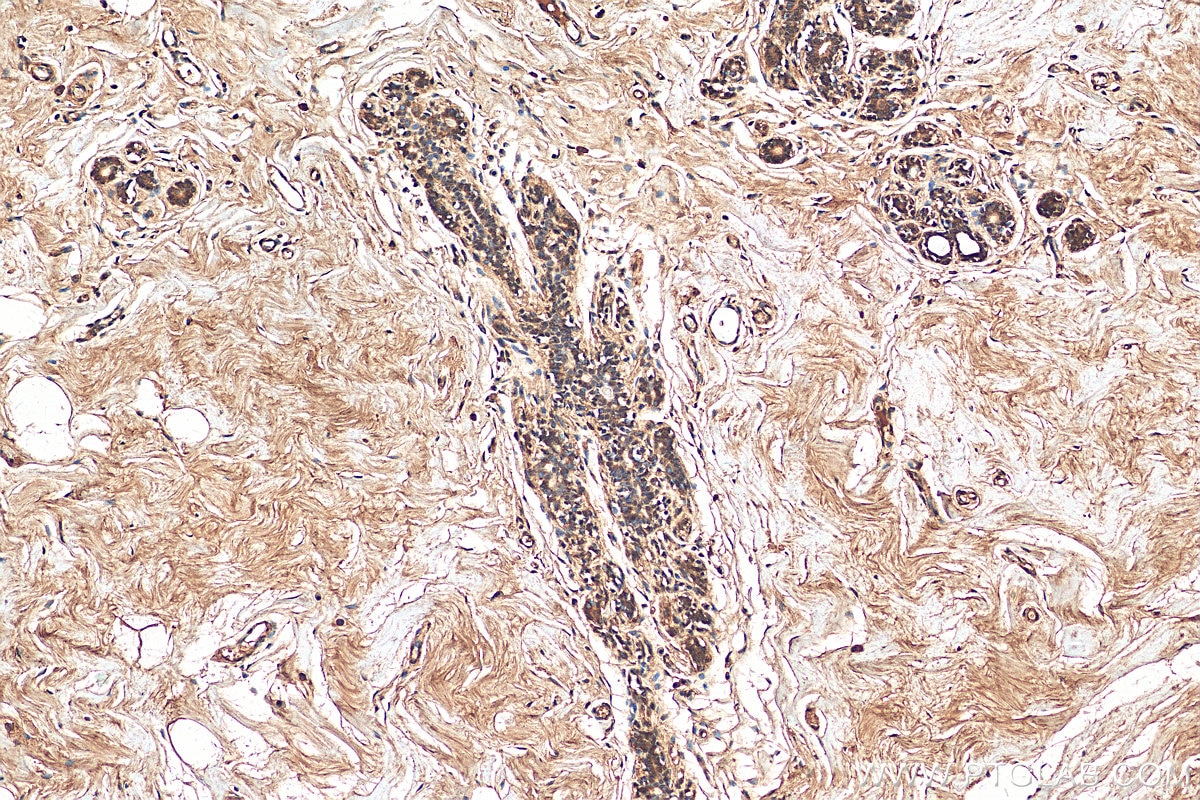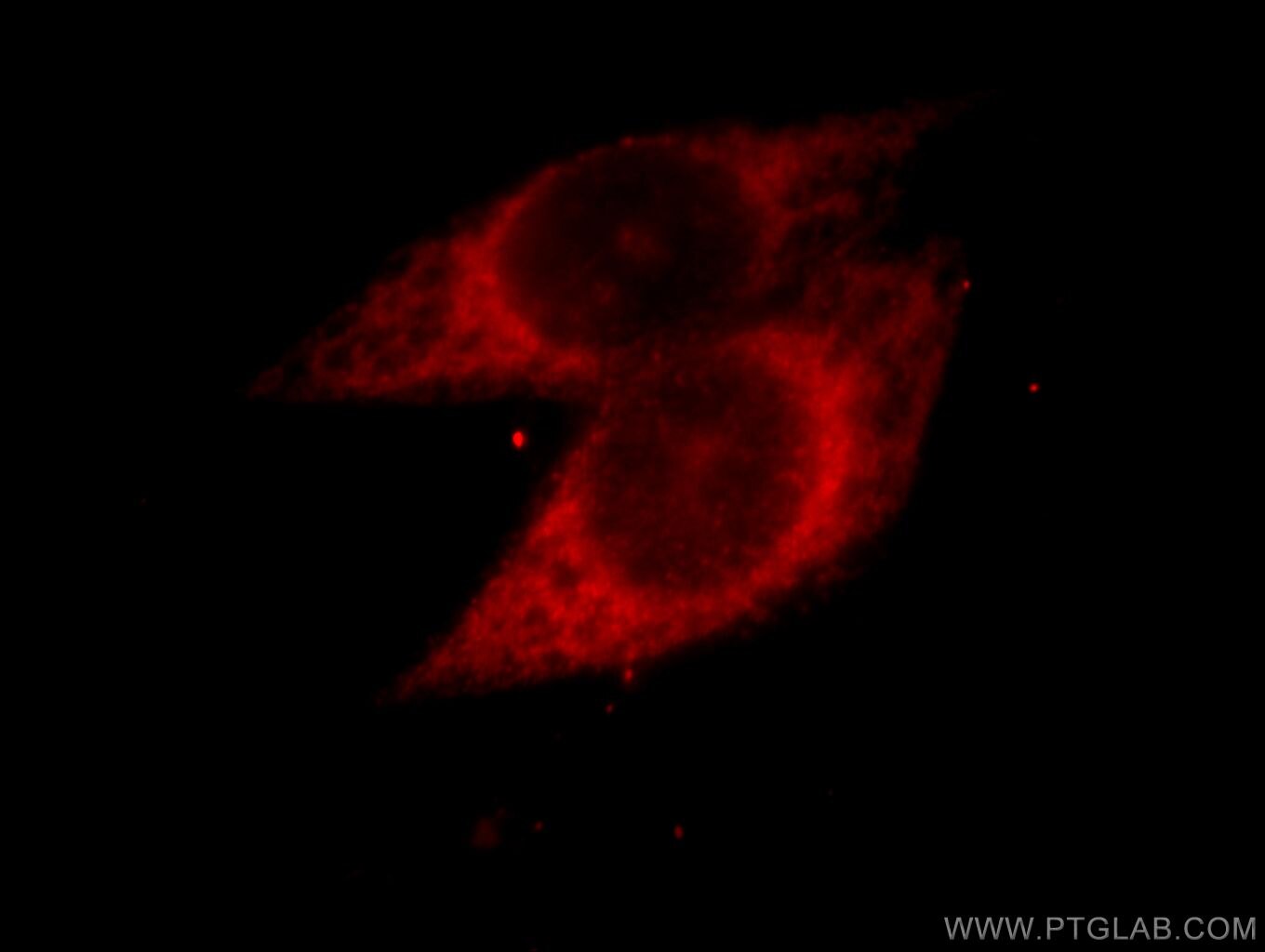Tested Applications
| Positive WB detected in | mouse heart tissue, human heart tissue, human kidney tissue, rat heart tissue, mouse kidney tissue |
| Positive IHC detected in | human breast cancer tissue, human pancreas cancer tissue, human renal cell carcinoma tissue Note: suggested antigen retrieval with TE buffer pH 9.0; (*) Alternatively, antigen retrieval may be performed with citrate buffer pH 6.0 |
| Positive IF/ICC detected in | Hela cells |
Recommended dilution
| Application | Dilution |
|---|---|
| Western Blot (WB) | WB : 1:500-1:3000 |
| Immunohistochemistry (IHC) | IHC : 1:50-1:500 |
| Immunofluorescence (IF)/ICC | IF/ICC : 1:10-1:100 |
| It is recommended that this reagent should be titrated in each testing system to obtain optimal results. | |
| Sample-dependent, Check data in validation data gallery. | |
Published Applications
| KD/KO | See 1 publications below |
| WB | See 4 publications below |
Product Information
11289-1-AP targets PARP3 in WB, IHC, IF/ICC, ELISA applications and shows reactivity with human, mouse, rat samples.
| Tested Reactivity | human, mouse, rat |
| Cited Reactivity | human, mouse |
| Host / Isotype | Rabbit / IgG |
| Class | Polyclonal |
| Type | Antibody |
| Immunogen |
CatNo: Ag1844 Product name: Recombinant human PARP3 protein Source: e coli.-derived, PGEX-4T Tag: GST Domain: 234-533 aa of BC014260 Sequence: EALEEALKGPTDGGQSLEELSSHFYTVIPHNFGHSQPPPINSPELLQAKKDMLLVLADIELAQALQAVSEQEKTVEEVPHPLDRDYQLLKCQLQLLDSGAPEYKVIQTYLEQTGSNHRCPTLQHIWKVNQEGEEDRFQAHSKLGNRKLLWHGTNMAVVAAILTSGLRIMPHSGGRVGKGIYFASENSKSAGYVIGMKCGAHHVGYMFLGEVALGREHHINTDNPSLKSPPPGFDSVIARGHTEPDPTQDTELELDGQQVVVPQGQPVPCPEFSSSTFSQSEYLIYQESQCRLRYLLEVHL Predict reactive species |
| Full Name | poly (ADP-ribose) polymerase family, member 3 |
| Calculated Molecular Weight | 60 kDa |
| Observed Molecular Weight | 60-62 kDa |
| GenBank Accession Number | BC014260 |
| Gene Symbol | PARP3 |
| Gene ID (NCBI) | 10039 |
| RRID | AB_2283392 |
| Conjugate | Unconjugated |
| Form | Liquid |
| Purification Method | Antigen affinity purification |
| UNIPROT ID | Q9Y6F1 |
| Storage Buffer | PBS with 0.02% sodium azide and 50% glycerol, pH 7.3. |
| Storage Conditions | Store at -20°C. Stable for one year after shipment. Aliquoting is unnecessary for -20oC storage. 20ul sizes contain 0.1% BSA. |
Background Information
PARP3 (Poly(ADP-ribose) polymerase 3), also known as ARTD3, is the third member of the PARP family that catalyze a post-translational modification of proteins to promote, control or adjust numerous cellular events including genome integrity, transcription, differentiation, cell metabolism or cell death (PMID: 31095444). PARP3 is a 60-kDa protein containing an N-terminal WGR (tryptophan-, glycine-, and arginine-rich) domain and a C-terminal catalytic domain. PARP3 has been described to interact with partners belonging to the NHEJ pathway including DNA-PKcs, DNA ligase IV, Ku70 and Ku80 and to accelerate XRCC4/DNA ligase IV-mediated ligation of chromosomal DSB in concert with APLF (PMID: 24598253).
Protocols
| Product Specific Protocols | |
|---|---|
| IF protocol for PARP3 antibody 11289-1-AP | Download protocol |
| IHC protocol for PARP3 antibody 11289-1-AP | Download protocol |
| WB protocol for PARP3 antibody 11289-1-AP | Download protocol |
| Standard Protocols | |
|---|---|
| Click here to view our Standard Protocols |
Publications
| Species | Application | Title |
|---|---|---|
Mol Cell Unrestrained poly-ADP-ribosylation provides insights into chromatin regulation and human disease. | ||
EBioMedicine PARP inhibitors suppress tumours via centrosome error-induced senescence independent of DNA damage response | ||
Cell Chem Biol Allosteric regulation of DNA binding and target residence time drive the cytotoxicity of phthalazinone-based PARP-1 inhibitors
|

